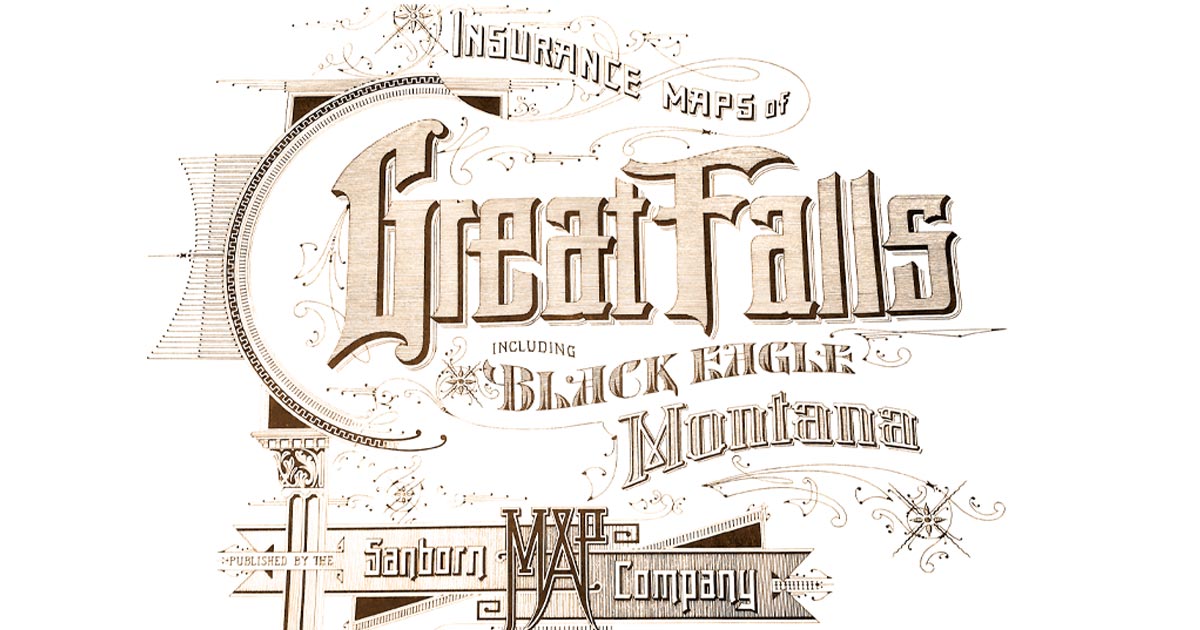This article contains affiliate links.
Have you ever wanted to find the historical physical characteristics of a piece of property in your town? There’s an easy way to do it. You are likely to find the information you want on one of the historical Sanborn Maps . They provided fire insurance companies with information on fire hazards in areas associated with individual properties.
The First Maps
In 1866, Aetna Insurance Company hired civil engineer and surveyor Daniel Alfred Sanborn to make maps for an area of Tennessee as well as for the city of Boston. Sanborn expanded his business by continuing to contract with other insurance companies. He produced better maps than his competitors and bought out numerous map-making companies, eventually building his monopoly.
An advantage of the Sanborn maps—which were created for 12,000 cities and towns throughout the United States, Canada, and Mexico between 1867 and 1970—was uniformity of standards, accuracy, and representation. For instance, the color of a building on a Sanborn map would always indicate whether it was built of tile, adobe, stone, concrete, brick, or wooden frame. Their consistency helped insurance underwriters work more quickly and efficiently .
By the turn of the 20th century, fire insurance companies, city governments, city planners, banks, and utility companies relied on the Sandborn maps, whose production reached a peak in the early 1930s.
Sandborn Employees
In its heyday, the company had more than 700 employees, who consisted of 400 cartographers, printers, managers, salesmen, and support staff, as well as 300 field surveyors.
The field surveyors often had a difficult time doing their work on location. Home and commercial building owners would become suspicious of an unfamiliar person who would simply show up on their property and start making measurements and taking notes. Surveyors were known to have landed in jail, been attacked by dogs, cussed at by home owners, and reported as spies.
Volume Updates
Sanborn maps were usually produced on large sheets of paper, and larger cities required one or more volumes, which were colored by hand. For instance, New York City required 39 volumes of maps.
The maps were often kept up to date—especially during the Depression—with “correction slips” that noted changes to the maps. This method was more economical than printing whole new, updated volumes.
Sanborn employees, frequently called “pasters,” would arrive at a company that had a Sanborn subscription, to paste in any update to a volume.
Industry Changes
By the 1950s, insurance companies no longer sought the Sanborn Maps (however, researchers still find them very useful today) because they were expensive and required a lot of storage space—an average volume was 21 by 25 inches. Furthermore, modern building construction, better fire codes, and improved fire protection methods changed fire hazards that needed recording. Most insurance companies began referring to smaller references cards instead for needed info.
But not all was lost. In the 1940s, the US Census Bureau purchased 1,840 volumes of Sanborn maps, to serve as the cartographic base for their statistical and sampling surveys. In 1967, when this collection was no longer useful to the Census Bureau, it was transferred to the Library of Congress.
Sanborn Maps Today
Sanborn maps are still preserved in the Geography and Map Division of the Library of Congress, where an estimated 700,000 large-scale Sanborn maps are kept in bound and unbound editions. They remain as the largest publicly accessible collection of Sanborn maps in the country.
The collection is so huge that, initially, the maps had to be stored offsite from the main facility. The maps are now digitized and posted on the internet for general public use.
Volumes left in local communities were given to libraries, historical and genealogical societies, and history museums, where they can be viewed today as historical records. Sanborn Maps are still considered useful to those who want to get a historical perspective of a piece of property and see how it has changed throughout the years.
With copies from different time periods, a researcher can identify buildings, street names, sidewalk widths, property boundaries, natural features, house and block numbers, building materials, locations of fire hydrants, and locations of water and gas mains.
“People, who inquire about the historical aspects of a property will find the footprint of a house and the size of the lot at a specific time,” said Megan Sanford, Archives Administrator at the Great Falls History Museum.
Where to Find Sanborn Maps
Montana has 481 maps for different towns throughout the state, and Idaho has 394. You can find them online at www.loc.gov/rr/geogmap/sanborn. Some listings are considered ghost towns today.
Your public library reference librarian will know where hard copies of Sanborn maps for your area are presently kept, protected, and open for viewing.
While perusing a Sanborn map, you may find it is a special, one-of-a-kind “pasted” hard copy, showing changes made for a year not listed with the Library of Congress, which makes it all the better for providing additional information on changes made over the years. MSN









